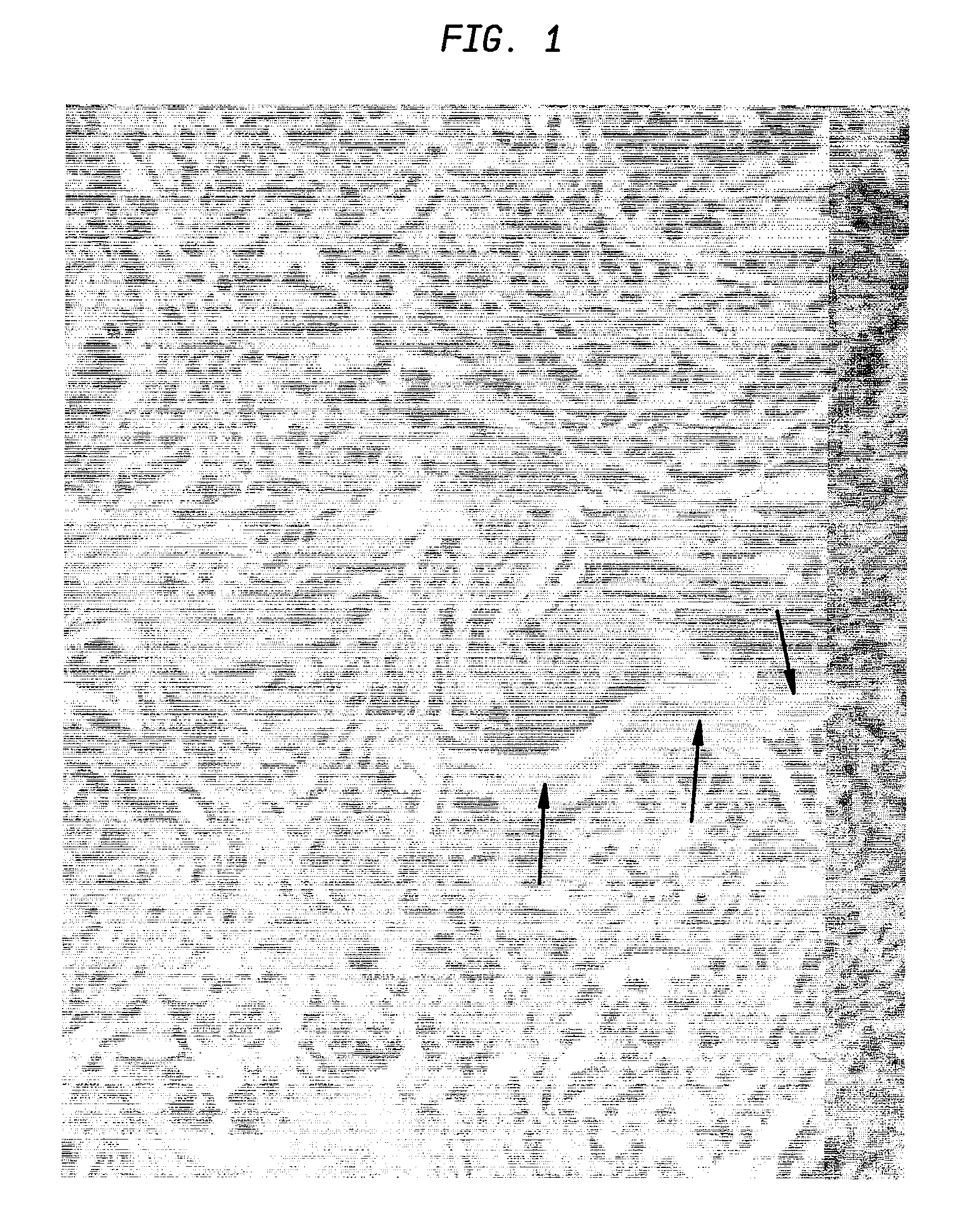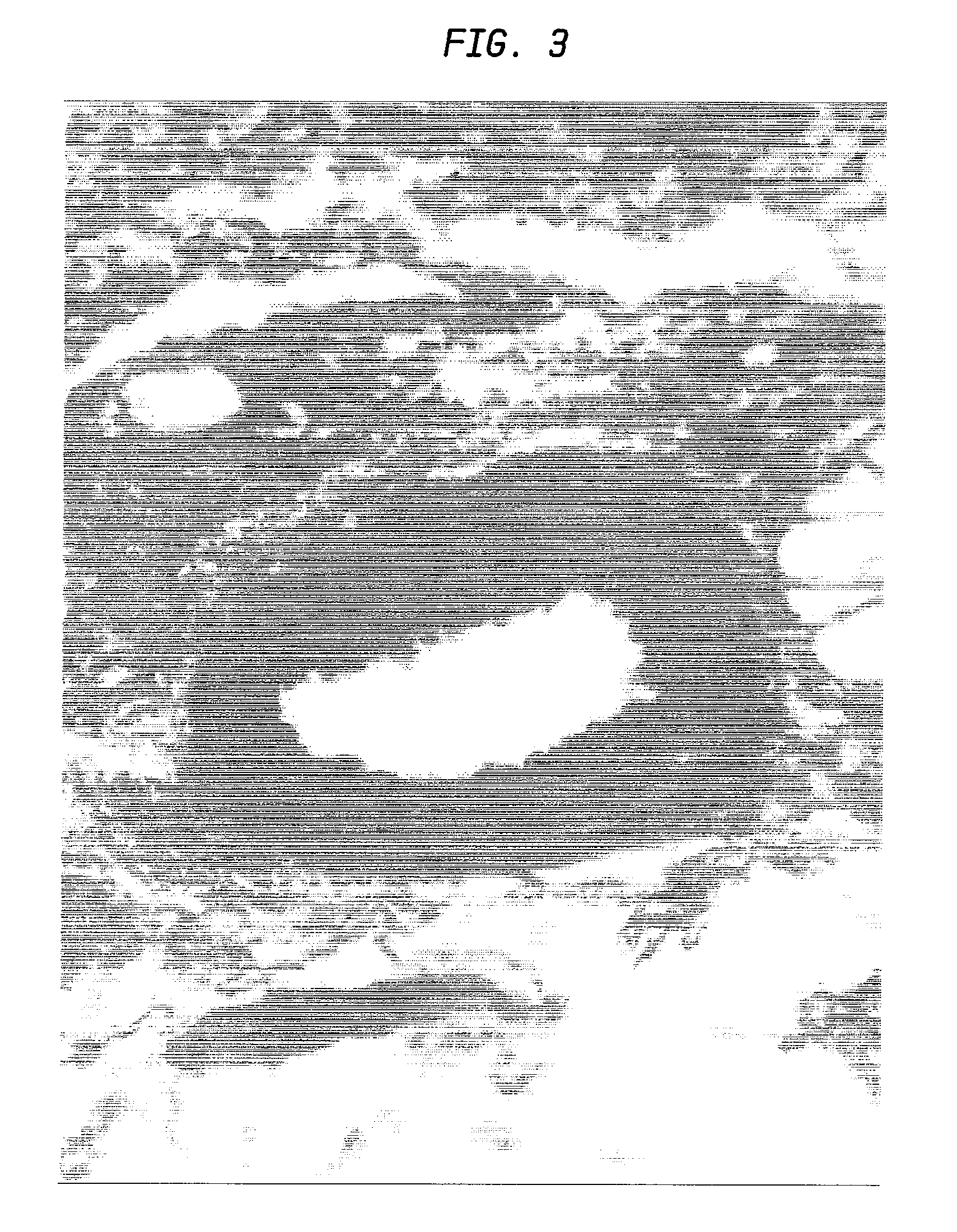Extracellular matrix cancer vaccine adjuvant
a cancer vaccine and extracellular matrix technology, applied in the field of cancer vaccines, can solve the problems of ineffective influenza vaccine effect of alum, unstable immune response, and less immunogenicity
- Summary
- Abstract
- Description
- Claims
- Application Information
AI Technical Summary
Benefits of technology
Problems solved by technology
Method used
Image
Examples
example 1
Materials and Methods
[0078]The present example provides some examples of materials and methods that may be used in the practice of the present invention.
Small Intestinal Submucosa (SIS)
[0079]Small Intestinal Submucosa (SIS) was obtained from Cook Biotech, Inc. (West Lafayette, Ind.). The material was provided as a sterile, lyophilized sheet of extracellular matrix. Experimental grade material was provided for use in the present studies of an SIS preparation that was described as having been prepared by harvesting porcine jejunum and placing 10- to 20-cm lengths into saline solution (31-33). Following removal of all mesenteric tissues, the jejunal segment was everted and the tunica mucosa abraded using a longitudinal wiping motion with a scalpel handle and moistened gauze. The serosa and tunica muscularis were then gently removed using the same procedure. The remaining tissue was disinfected with peracetic acid, rinsed extensively in high purity water, and sterilized using ethylene o...
example 2
In Vivo Activity of Tumor Cell Vaccine and Cancer Adjuvant
[0089]The present example demonstrates the utility of the present invention as an effective cancer vaccine adjuvant in vivo.
[0090]Tumor cells were cultured on SIS. Following three days of growth, the SIS with attached cells were fixed with glutaraldehyde. Subcutaneous tumors grown in the flank of Lobund-Wistar rats which had been administered PAIII prostate cancer cells 10 days earlier were surgically resected.
[0091]Groups of 5 rats then underwent either no further treatment; treatment with glutaraldehyde-fixed tumor (GFT) cells applied directly on the tumor bed; treatment with glutaraldehyde-fixed (GF) SIS (without cells) applied on the tumor bed; or treatment with glutaraldehyde-fixed SIS (with cells) applied on the tumor bed. Three weeks later, after tumors had re-grown in most rats, tumors were weighed with the following results:
[0092]No treatment=mean tumor weight of 11.64 grams
[0093]GFT cells=mean tumor weight of 10.54 ...
example 3
ECM Supports Cancer Cell Expansion
[0097]The present example demonstrates the utility of the invention for providing a method for expanding a cancer cell population on an extracellular matrix material. The present example also demonstrates the utility of the invention for preparing a highly immunogenic population of cells useful in a cancer vaccine preparation. In the case of cancer, it is likely that many key antigens are expressed by connective tissue matrix and involve interactions of neoplastic cells with the extracellular matrix. Cancer cell vaccines grown on an extracellular matrix thus may be prepared according to the present example and used as improved vaccine antigen compositions for vaccination.
1. Fascia Extracellular Matrix Material (FEM)
[0098]The present example demonstrates another example of the type of extracellular matrix material that may be used in the practice of the present invention. The present example employs porcine fascia extracellular matrix material (FEM)....
PUM
| Property | Measurement | Unit |
|---|---|---|
| v/v | aaaaa | aaaaa |
| median time | aaaaa | aaaaa |
| median time | aaaaa | aaaaa |
Abstract
Description
Claims
Application Information
 Login to View More
Login to View More - R&D
- Intellectual Property
- Life Sciences
- Materials
- Tech Scout
- Unparalleled Data Quality
- Higher Quality Content
- 60% Fewer Hallucinations
Browse by: Latest US Patents, China's latest patents, Technical Efficacy Thesaurus, Application Domain, Technology Topic, Popular Technical Reports.
© 2025 PatSnap. All rights reserved.Legal|Privacy policy|Modern Slavery Act Transparency Statement|Sitemap|About US| Contact US: help@patsnap.com



